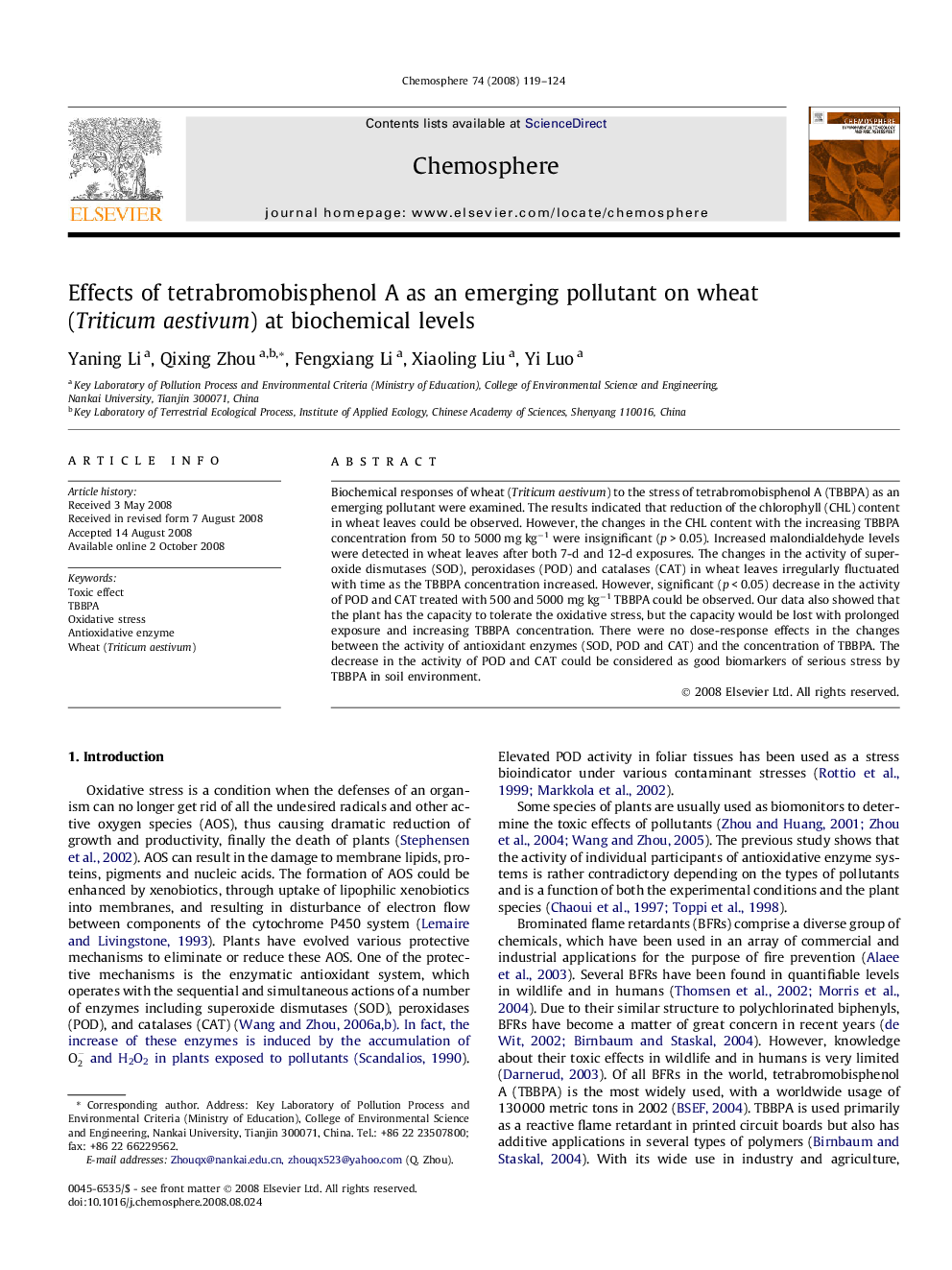| Article ID | Journal | Published Year | Pages | File Type |
|---|---|---|---|---|
| 4413764 | Chemosphere | 2008 | 6 Pages |
Biochemical responses of wheat (Triticum aestivum) to the stress of tetrabromobisphenol A (TBBPA) as an emerging pollutant were examined. The results indicated that reduction of the chlorophyll (CHL) content in wheat leaves could be observed. However, the changes in the CHL content with the increasing TBBPA concentration from 50 to 5000 mg kg−1 were insignificant (p > 0.05). Increased malondialdehyde levels were detected in wheat leaves after both 7-d and 12-d exposures. The changes in the activity of superoxide dismutases (SOD), peroxidases (POD) and catalases (CAT) in wheat leaves irregularly fluctuated with time as the TBBPA concentration increased. However, significant (p < 0.05) decrease in the activity of POD and CAT treated with 500 and 5000 mg kg−1 TBBPA could be observed. Our data also showed that the plant has the capacity to tolerate the oxidative stress, but the capacity would be lost with prolonged exposure and increasing TBBPA concentration. There were no dose-response effects in the changes between the activity of antioxidant enzymes (SOD, POD and CAT) and the concentration of TBBPA. The decrease in the activity of POD and CAT could be considered as good biomarkers of serious stress by TBBPA in soil environment.
